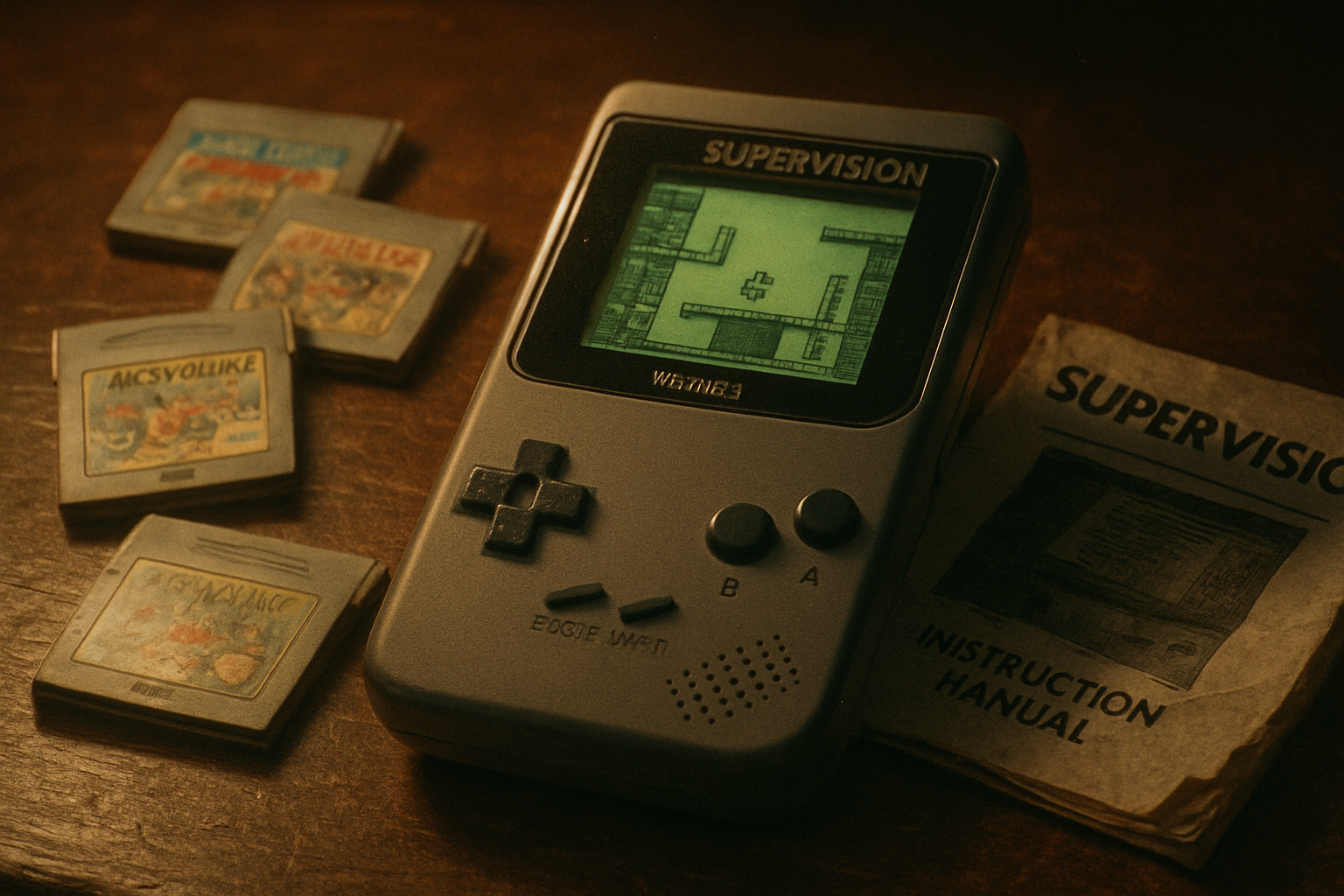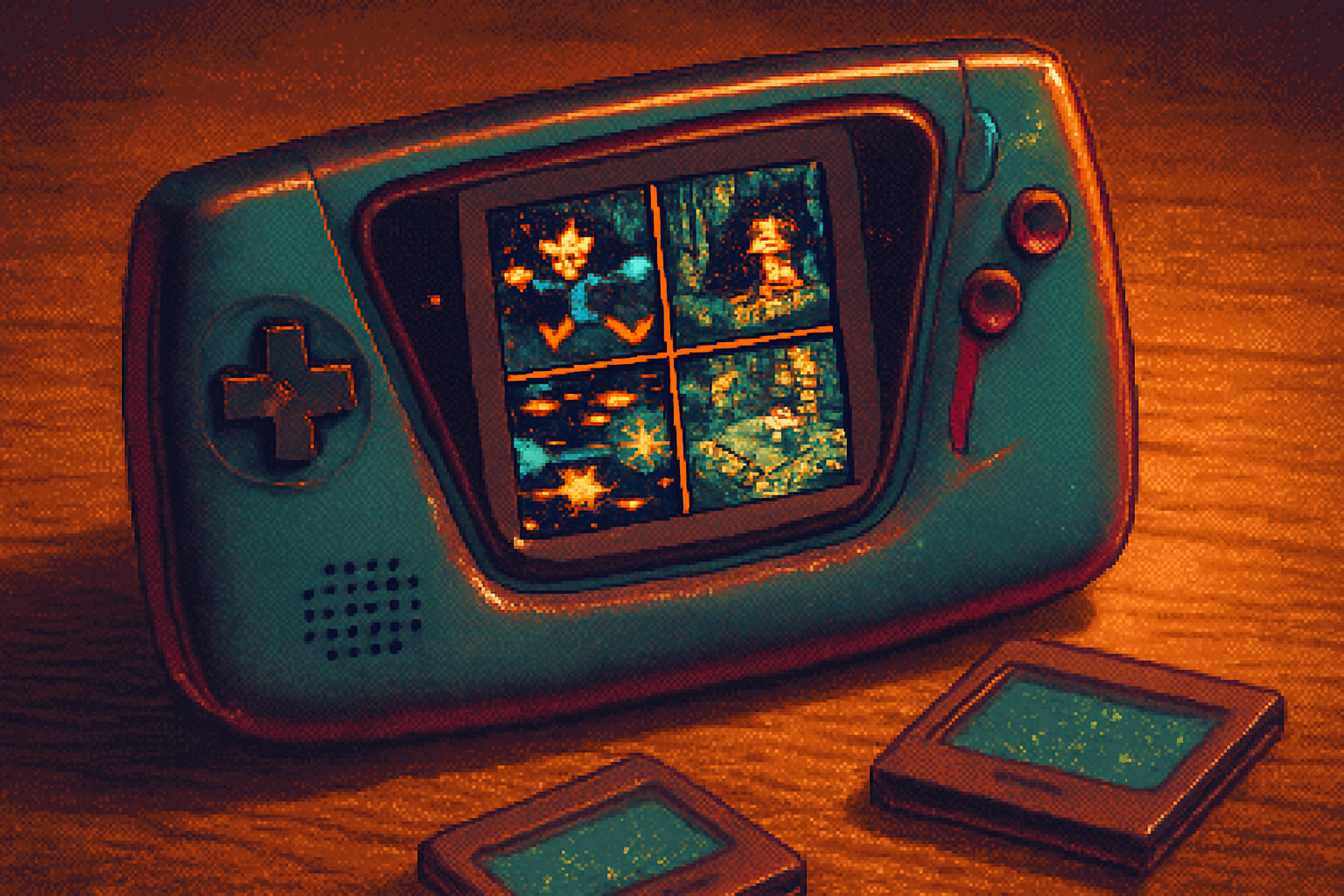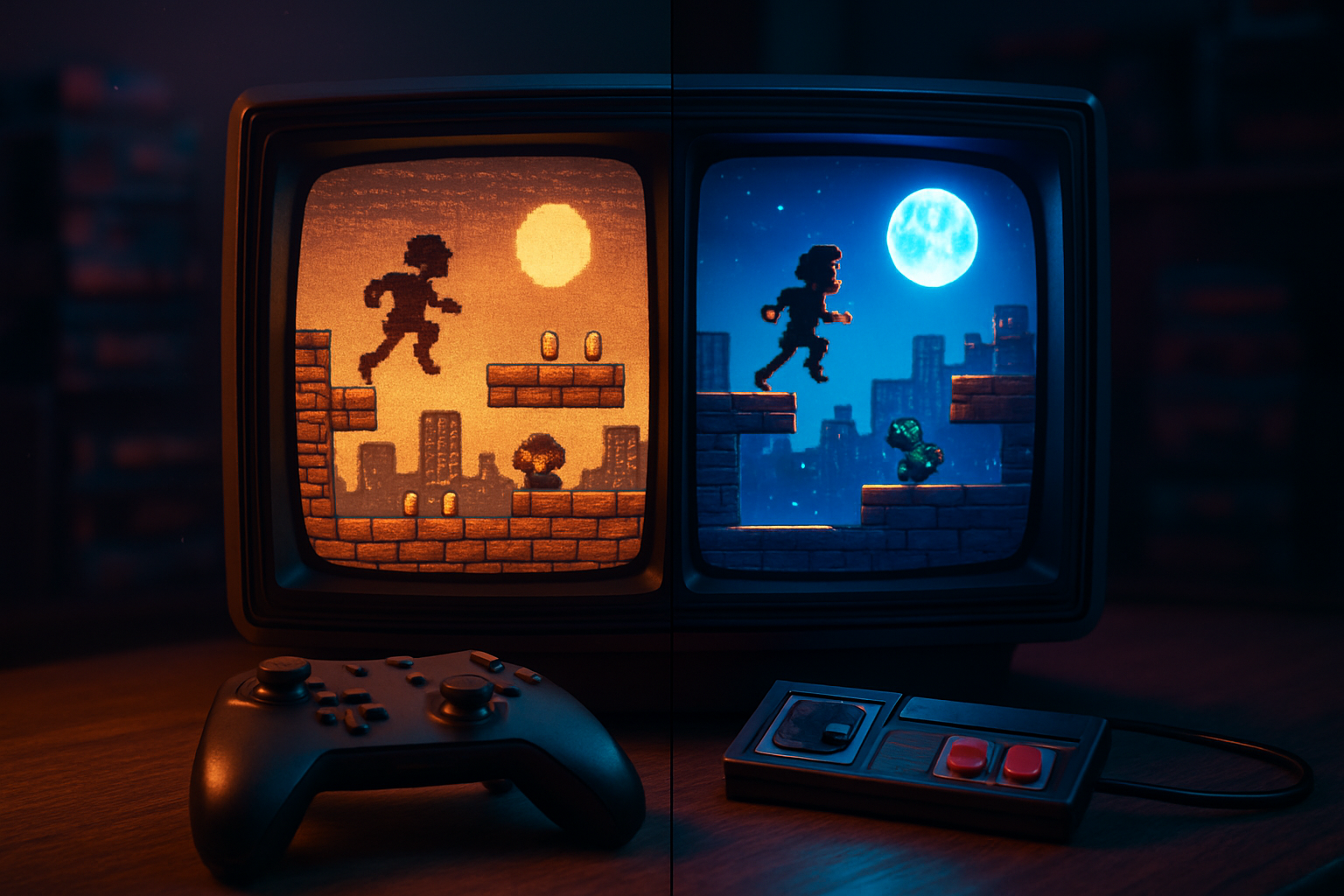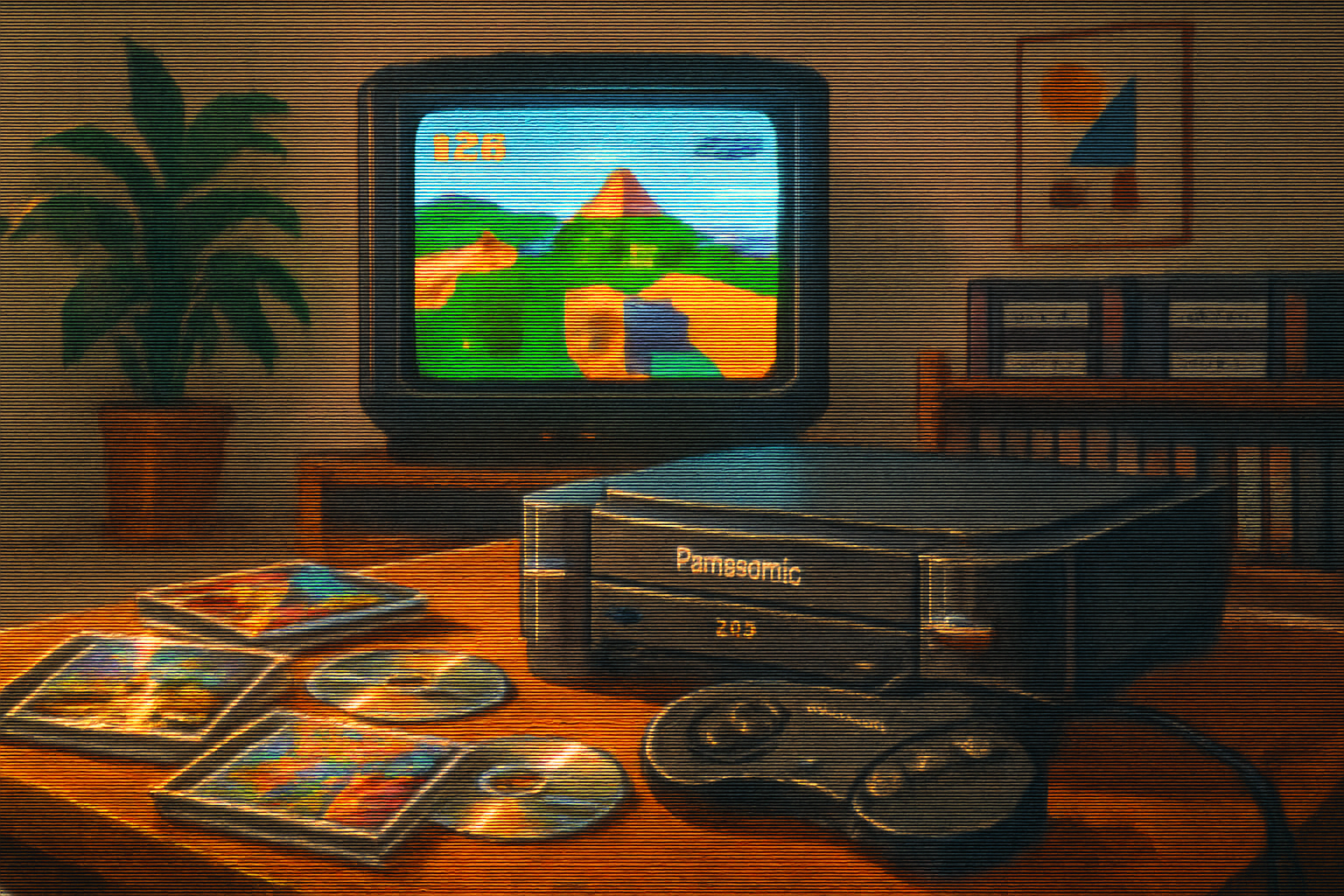· retrogaming · 6 min read
The Watara Supervision: An Underrated Gem from the 90s
A deep dive into the Watara Supervision - a budget 1990s handheld that dared to challenge the Game Boy with a distinctive design, a quirky library of licensed and unlicensed titles, and a small-but-passionate following today.
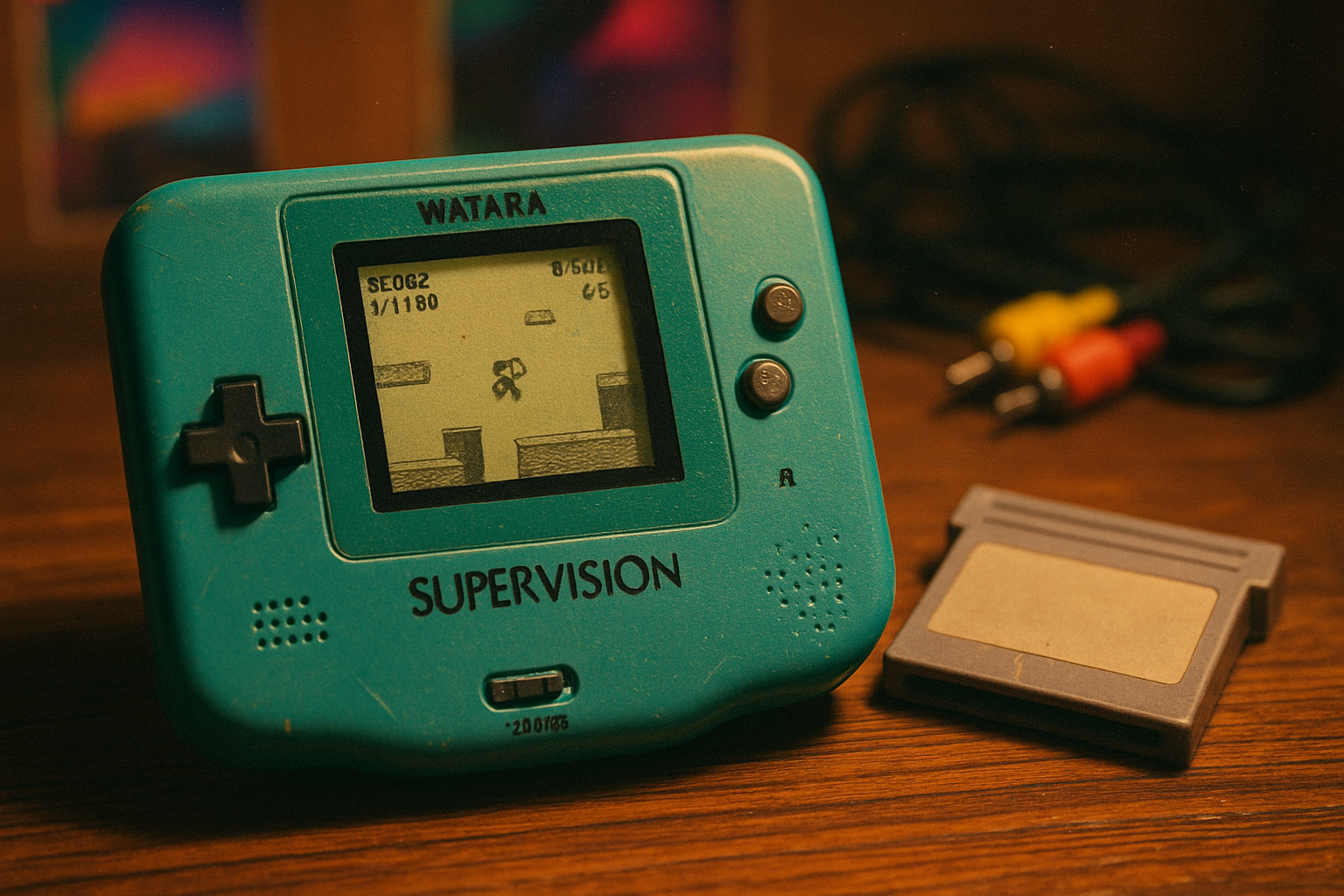
A forgotten contender
In 1992, long after Nintendo had established the Game Boy as the handheld standard, a Hong Kong company called Watara released the Supervision - a low-cost, color-accented challenger that quietly sold in several markets under different badges. It never unseated Nintendo, but the Supervision carved out a curious niche: a distinctive industrial design, a library full of odd ports and regional quirks, and plenty of cost-driven compromises that make it a fascinating piece of handheld history.
For many collectors and retro gamers today the Supervision is an underrated gem: not because it was technologically brilliant, but because it tells a story about how competition and price pressure shaped the early portable market - and produced some delightfully strange software along the way. For a useful technical and historical summary see the Supervision entry on Wikipedia and the excellent device profile at the Handheld Museum.
- Wikipedia: https://en.wikipedia.org/wiki/Watara_Supervision
- Handheld Museum: http://www.handheldmuseum.com/Watara/Supervision.htm
What made the Supervision different?
The Supervision was intentionally marketed as a budget alternative to Nintendo’s handheld. Watara aimed at people who wanted portable play but didn’t want to pay premium prices. The result was a console that stands out in a few notable ways:
Distinctive horizontal layout - unlike the vertically oriented Game Boy, the Supervision used a landscape design with the screen centered and controls placed on either side. This gave many titles a different feel compared with other contemporaries.
Visual identity and color options - Watara produced the unit in multiple colors and variants. Compared with the austere Game Boy, the Supervision’s color choices and glossy plastics made it easy to spot on store shelves.
Price and accessibility - the Supervision was intentionally low-cost, which shaped everything about it - from cartridge production to the software partners that supported the system.
A quirky software ecosystem - the Supervision’s library includes licensed ports, many unlicensed games, knockoffs and “inspired by” conversions of popular NES and arcade titles. The result is a catalog that’s more chaotic than curated, which makes exploring it a bit like treasure hunting.
Hardware and accessories (a practical look)
While the Supervision wasn’t trying to win technical benchmarks, it offered a complete handheld experience for the price point.
Controls - ergonomically, the horizontal layout was comfortable for many players and allowed some games to use left/right control schemes that felt different from vertical Game Boy titles.
Screen and display - the unit prioritized affordability over cutting-edge display technology. It produced playable images for most games, though contrast, viewing angle and backlight options were limited on stock units.
Expandability - Watara and third parties released a handful of accessories during the Supervision’s commercial life - from TV output adapters to magnifiers and alternative casings - emphasizing the console’s role as a budget, flexible platform.
The hardware’s design reflects the company’s target market: buyers who wanted a portable gaming device at a bargain price, not cutting-edge performance.
A library of oddballs: ports, bootlegs, and surprises
If you think of handheld game libraries as curated storefronts of third-party developers, the Supervision is a different animal. Its catalog is notable for three overlapping tendencies:
Licensed ports and inexpensive conversions - many games on the Supervision are modest conversions or reworks of popular arcade or NES titles. They’re rarely definitive versions, but they’re often playable and interesting for fans of retro ports.
Unlicensed entries and regional differences - the Supervision hosts many titles that either bypassed official licensing channels or were produced specifically for certain markets. This has given collectors a bewildering array of regional variants and bootleg reproductions.
Original and homebrew oddities - tucked among the ports are original or semi-original projects - some rough, some surprisingly creative - that show developers experimenting with the hardware’s strengths and limits.
Exploring the Supervision’s cartridge catalog can feel like walking through a flea market aisle: there are gems, duds, and items you’ll only find once.
Why the Supervision ultimately faded
Several factors explain why the Supervision couldn’t sustain a long-term challenge to Nintendo:
Nintendo’s ecosystem advantage - Nintendo had a massive install base, developer relationships, and licensing power. Competing on software breadth and quality was always uphill.
Market saturation and brand trust - by the early 90s the Game Boy’s brand recognition was immense. Many buyers preferred the safe bet over a lower-cost alternative.
Hardware compromises - while ideal for cost-conscious buyers, the Supervision’s cheaper components limited its ability to deliver consistently strong gameplay experiences across titles.
Regional distribution fragmentation - the system’s inconsistent marketing and rebranding in different regions diluted its potential reach.
Legacy and why collectors love it today
If you’re a retro gaming enthusiast, there are a few reasons the Supervision is worth revisiting:
Historical curiosity - it’s a concrete example of a surviving challenger in the handheld wars - a window into how companies tried to compete with Nintendo.
A unique aesthetic - the horizontal design, colorful shells, and unconventional game list make the Supervision an attractive shelf piece and conversation starter.
Hunting for oddities and localized titles - for collectors who enjoy tracking down obscure cartridges and bootlegs, the Supervision is a rewarding rabbit hole.
Community preservation - hobbyists and preservationists have helped keep the system alive, producing repair guides, replacement shells, and tips for improving displays and sound.
Tips for would-be collectors
Thinking about adding a Supervision to your collection? A few practical tips:
Condition matters - as with all plastic-era handhelds, shell cracking, discoloration and sticky buttons are common. Check photos and seller notes carefully.
Screen state - many units suffer from washed-out or ghosting displays. Look for videos or ask sellers to demonstrate the screen before buying.
Cartridge verification - the library includes many unlicensed or duplicated titles. If provenance matters to you, verify stickers and PCB photos where possible.
Accessories and spares - replacement shells, batteries and connectors are often available via retro electronics communities. A little DIY knowledge goes a long way.
Final thoughts: underrated, not perfect - and more interesting for it
The Watara Supervision never became a household name the way the Game Boy did - but that’s part of its charm. It represents an era when price competition opened the door to creative hardware choices and idiosyncratic software libraries. For collectors and retro players, the Supervision is valuable not because it was the best, but because it’s an honest artifact of 90s market dynamics: scrappy, colorful, and full of surprises.
If you’re curious for a deeper technical and historical rundown, start with the Supervision articles linked earlier and then dive into community forums and collector sites. You’ll find restoration guides, cartridge lists, and plenty of photos - the best way to appreciate a handheld that never quite got its due.
